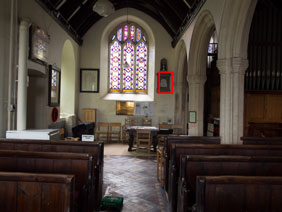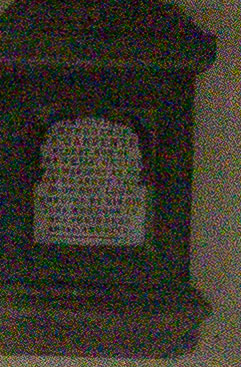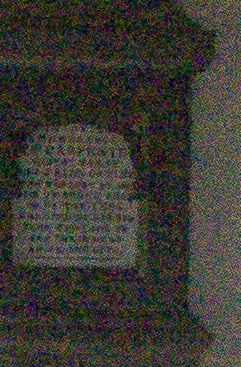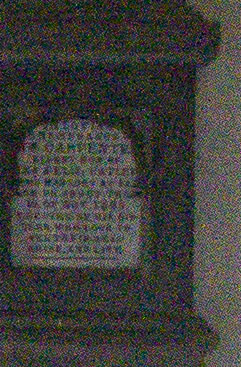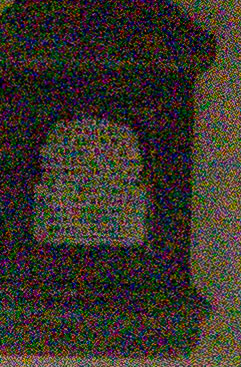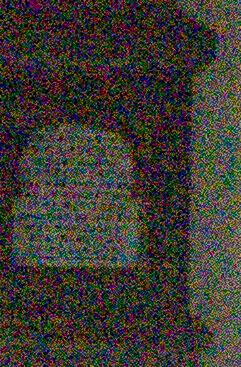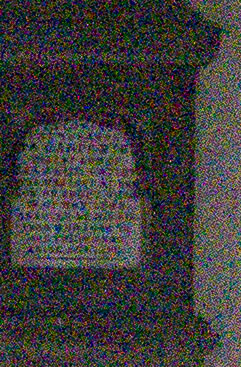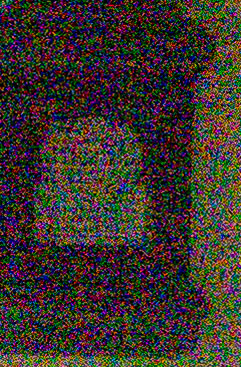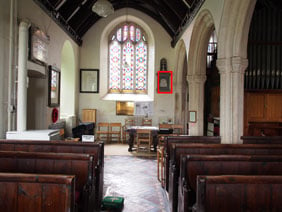Olympus OM-D E-M5 review
-
-
Written by Ken McMahon
Quality
Olympus E-M5 vs Sony NEX-7 vs Nikon D3200
|
Olympus OM-D E-M5 | Sony NEX-7 | Nikon D3200 | ||
 |  | |||
f5.6, 200 ISO | f5.6, 100 ISO | f5.6, 100 ISO | ||
 |  |  | ||
f5.6, 200 ISO | f5.6, 100 ISO | f5.6, 100 ISO | ||
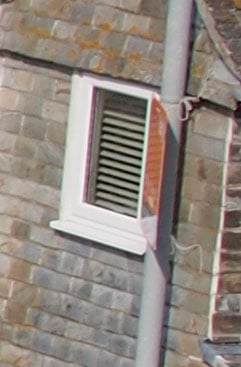 | 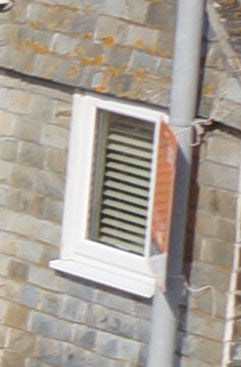 | 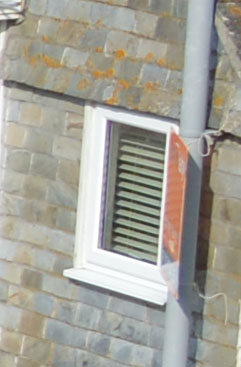 | ||
f5.6, 200 ISO | f5.6, 100 ISO | f5.6, 100 ISO | ||
 |  |  | ||
f5.6, 200 ISO | f5.6, 100 ISO | f5.6, 100 ISO |
Olympus OM-D E-M5 results : Quality / RAW vs JPEG / Noise
Olympus E-M5 JPEG vs RAW
|
OM-D E-M5 in-camera JPEG | OM-D E-M5 RAW default processing | OM-D E-M5 RAW tweaked processing | ||
 |  |  | ||
f5.6, 200 ISO | f5.6, 200 ISO | f5.6, 200 ISO | ||
 |  |  | ||
f5.6, 200 ISO | f5.6, 200 ISO | f5.6, 200 ISO | ||
 | 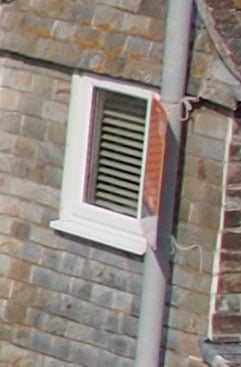 | 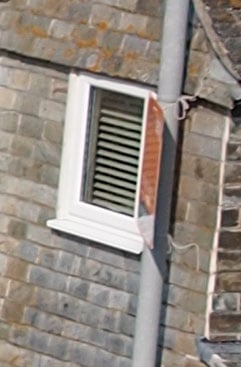 | ||
f5.6, 200 ISO | f5.6, 200 ISO | f5.6, 200 ISO | ||
 |  |  | ||
f5.6, 200 ISO | f5.6, 200 ISO | f5.6, 200 ISO |
Olympus E-M5 vs Sony NEX-7 vs Nikon D3200 noise in RAW
The RAW files were processed in Adobe Camera RAW using identical settings: Sharpening at 70 / 0.5 / 36 / 10, Luminance and Colour Noise Reduction both set to zero, and the Process to 2012 with the Adobe Standard profile. These settings were chosen to reveal the differences in sensor quality and isolate them from in-camera processing. The high degree of sharpening with a small radius enhances the finest details without causing undesirable artefacts, while the zero noise reduction unveils what’s really going on behind the scenes – as such the visible noise levels will be much higher than you’re used to seeing in many of my comparisons, but again it’s an approach that’s designed to show the actual detail that’s being recorded before you start work on processing and cleaning it up if desired. Once again the two 24 Megapixel contenders, the Sony NEX-7 and Nikon D3200, kick-off this sequence at 100 ISO. Despite sharing what I believe is the same sensor, their RAW output when processed using the conditions above delivers quite different-looking results. The D3200 crop is much better-defined with higher contrast than the NEX-7, but remember the purpose of the RAW conversion described above is not to make the images look good but to reveal the amount of detail and noise in them prior to processing. In terms of noise, there’s a faint sprinkling in the background, but nothing to be concerned about. The Olympus E-M5 joins-in at 200 ISO with a similar degree of background noise to the other pair, but very crisp details; meanwhile the text on the NEX-7 crop is already becoming less defined. At 400 ISO the noise levels have increased on all three, but again remain similar in amount and style when viewed at 100%. At 800 and 1600 ISO the noise levels steadily increase, but again remain at similar levels across all three models when viewed at 100%. As the sensitivity increases though, look at the degree of fine detail that’s still resolved. The text on the E-M5 sample is definitely more legible than the NEX-7, a difference that’s particularly noticeable at 1600 ISO and beyond. At the higher sensitivities the noise levels again remain fairly similar on all three models – again when viewed at 100% – but the Olympus continues to enjoy better details than the Sony. I keep qualifying 100% views because that’s what we’re comparing below, but to be fair the higher resolutions of the Sony and Nikon mean you’re viewing a smaller portion of their total images than the Olympus. While comparisons made at 100% are relevant, it’s equally important to compare the quality made at the same reproduction, such as on the same sized print. You can simulate this on-screen by down-sampling the 24 Megapixel images to 16 Megapixels, at which point they show the same-sized areas when cropped. In this instance, any artefacts become smaller than when viewed at 100%, but even though this evens the playing-field between the Sony / Nikon and the Olympus, the fact is the E-M5 still keeps hold of finer details than the NEX-7 beyond 400 ISO in this test. Again it’s particularly clear at 1600 ISO and beyond where anyone can see no amount of down-sampling on the NEX-7 image is going to match the E-M5’s detail. This is a very interesting result and one which will surprise many. Sony’s NEX system with its large APS-C sensors is generally believed to deliver better low light quality than the smaller sensors of its Micro Four Thirds rivals. This may be true when the NEX models stick to modest resolutions, but with 24 Megapixels, Sony has arguably pushed the density a little too far and any advantage of its sensor real-estate for lower noise is lost. Of course it’s a sacrifice you may be willing to make to have that amount of pixels in the image, but what this test proves is the actual degree of background noise at the pixel-level before processing on the NEX-7 and E-M5 is roughly the same despite their different sensor areas. And crucially the E-M5 is actually retaining more fine detail at higher sensitivities even when the NEX-7 image is down-sampled to the same resolution. Now there are other factors at play here including the lens selection and how well – or not – the respective cameras handle the processing by Adobe Camera RAW. So since what’s presented here may be perceived as a controversial result by some I’ll try and perform another comparison in the near future with higher quality lenses on both cameras. In the meantime though it’s an excellent result for the Olympus E-M5. In this test it equals or surpasses the quality of the NEX-7, which ranks it as one of the best quality mirrorless CSCs using a traditional Bayer colour filter on the sensor. The only test remaining is to see how it compares to its big rival in the Micro Four Thirds format itself: the Panasonic G3 / GX1. Both cameras share the same format and the same 16 Megapixel resolution, but is the sensor itself the same? Find out in my Olympus E-M5 vs Panasonic G3 / GX1 noise results, or if you’ve already seen enough, skip straight to my Olympus E-M5 sample images or verdict.
|
Olympus E-M5 vs Panasonic GX1 / G3 noise (RAW)
The RAW files were processed in Adobe Camera RAW using identical settings: Sharpening at 70 / 0.5 / 36 / 10, Luminance and Colour Noise Reduction both set to zero, the White Balance set to 4300K, and the Process to 2012 with the Adobe Standard profile. These settings were chosen to reveal the differences in sensor quality and isolate them from in-camera processing. The high degree of sharpening with a small radius enhances the finest details without causing undesirable artefacts, while the zero noise reduction unveils what’s really going on behind the scenes – as such the visible noise levels will be much higher than you’re used to seeing in many of my comparisons, but again it’s an approach that’s designed to show the actual detail that’s being recorded before you start work on cleaning it up if desired. The image above was taken with the Olympus OM-D E-M5 with the Leica 25mm f1.4 lens at f4 in Aperture Priority mode. At its base sensitivity of 200 ISO, the E-M5 metered an exposure of 0.6 seconds for this composition. The Panasonic GX1 was adjusted to deliver identical exposures, so what you see below is a like-for-like comparison: same lens, same ISO, same exposure and same RAW processing. Both cameras also share the same 16 Megapixel resolution (albeit with different sensors), so represent the pinnacle of the Micro Four Thirds system at the time of writing. Note the sensor in the Lumix GX1 is the same as that in the Lumix G3, so the results below are reflective of what you’d see from that model. Before discussing the actual image quality though, a quick observation. Both cameras took turns mounted on the same tripod using the same lens, so since both employ the Micro Four Thirds standard, both should have captured exactly the same field of view. But when framing and later analysing images from both cameras, it became obvious the E-M5 was capturing a fractionally smaller field of view to the GX1, suggesting a fractionally smaller sensor. This in turn is why the crops below show a fractionally different area – just look around the edges. The actual difference in field of view is sufficiently small not to have any significant impact on quality or coverage, but it does reinforce Olympus’ claim that the E-M5 uses a new sensor. Or at least uses it in a different way to preceding models from Panasonic. Now onto the actual quality. The Panasonic GX1 kicks-off the sequence at 160 ISO, while the E-M5 joins-in at 200 ISO. At these lowest sensitivities, both cameras are capturing a large amount of fine detail, which the RAW processing has really brought out. There’s nothing to choose between them in terms of resolution – as you’d expect with the same number of pixels and same lens in front of them – but looking closely in the background, you may notice fractional evidence of chroma noise on the GX1 sample. It’s nothing to worry about, and easily ironed-out with minimal noise reduction, but it’s revealing to find it here and not on the E-M5 sample. At 400 ISO both cameras are still recording lots of fine detail, but noise levels have increased a little in the background areas. There’s visible chroma noise from both, but it’s a little splotchier on the GX1 and the Panasonic also has more visible luminance noise on the pot. Again remember this is with no noise reduction applied at all. The same story continues at 800 ISO: slightly more chroma noise in the dark background of the GX1 and slightly higher luminance noise on the pot too, but to be fair, both cameras are still holding onto a decent degree of real-life fine details. Once again, the same trend at 1600 ISO, although some of the finest details are now covered by noise, so smoothing out these speckles would see the classic splotchy effect. At 3200 ISO the noise levels take another turn for the worse, although again the E-M5 remains a small step ahead. Likewise to the end of the scale. From this approach to RAW processing, I’d say the Olympus E-M5 enjoys a clear lead over the Panasonic GX1 / G3 sensor, with an advantage of at least half a stop, getting on for almost a whole stop at a push. This is a great result for the E-M5, and the Micro Four Thirds system as a whole, as it shows the standard delivering better image quality than ever before. Indeed I’d confidently say the E-M5 is delivering the best looking output from the format to date. Having reached the high ISOs, it’s also nice to return to the top of the table to again revel in the detail captured at the lower sensitivities – by both cameras. There’s sufficient detail captured here to satisfy the most demanding owners and proves the combination of a good lens with careful sharpening really can see Micro Four Thirds compete with larger formats. Now, head over to Ken’s Olympus E-M5 sample images to see some more real-life shots in a variety of conditions. PS – Many thanks to @BobAndersson for the brief loan of his E-M5 for this test and meeting for a lovely lunch!
|
Olympus E-M5 vs Sony NEX-7 vs Nikon D3200 noise in JPEG
The above shot was taken with the Olympus OM-D E-M5 with the M.Zuiko 12-50mm f3.5-6.3 len kit lens. For these tests the camera was placed on a tripod and the EM-5’s Gradation tonal control, which cannot be disabled was left on the default Normal position. The D3200’s Active D-Lighting tonal enhancement was turned off, and D-Range Optimizer was disabled on the Sony NEX-7. Noise reduction for all three cameras was left on default settings. In Aperture priority mode with the aperture set to f4 the E-M5 metered an exposure of 1/6 at 100 ISO. The Sony NEX-7 was adjusted by 1EV to produce an equivalent exposure. 100 ISO isn’t available on the OM-D E-M5, but the base 200 ISO crop looks clean and detailed. There’s a very fine texture you can just about make out, but it’s not intrusive and, unless you were pixel-peeping 100 percent crops, you wouldn’t know it was there. The texture increases marginally on the 400 ISO crop, but you have to compare these two crops very closely to notice any difference. There’s another incremental increase in the graininess with the step up to 800 ISO, but again it’s marginal, it isn’t obscuring fine detail and it’s not unpleasant looking. We’re still very firmly in every day use territory here. 1600 ISO is usually where it starts to get patchy, with noise affecting detail, saturation dropping and, sometimes, white balance going awry, but the E-M5 is having none of that. The edges are starting to bubble a little bit – look along the right side of the memorial plaque – and at 100 percent the pixels are now a little clumpy, but this is still easily good enough for viewing at at close to actual size. It’s at 3200 ISO that the OM-D EM-5 image quality really starts to suffer, edges are becoming indistinct and the fine detail is starting to break up. You can still read the text with a little effort, though, and I’d feel confident using this ISO sensitivity setting for web-sized display. At 6400 ISO medium sized detail is starting to go, the text is no longer readable and, viewed overall, the saturation is dropping off. This shot looks passable at screen sizes, but you probably wouldn’t want to print it. The 12800 and 25600 ISO settings are great for those must-have shots, just don’t expect too much in terms of detail. Compared with the crops from the Sony NEX-7 the Olympus OM-D E-M5 actually looks better to me at the lower ISO settings and as the sensitivity increases the gap widens. The 200 ISO crop looks cleaner and less noisy than the 100 ISO crop from the NEX-7. It’s generally recognised that Sony has done a superb job with noise reduction on its NEX models, but even though the NEX-7’s APS-C sensor is bigger than the Four-Thirds sensor in the EM-5, with the higher pixel count, the NEX-7 can’t match the noise performance of the EM-5’s lower resolution sensor. By 1600 ISO there is a least a stop difference in it. One thing that’s worth bearing in mind though is that in low light situations the NEX-7 has the advantage of its hand-held Twilight stacking mode. With the same sensor, but less effective noise reduction, the Nikon D3200 fares even less well than the NEX-7 when compared to the OM-D E-M5. There’s a perceptible difference in image quality even at the lower ISO senstivity settings and by 400 ISO the OM-D E-M5 has a clear advantage which only increases the higher up the ISO sensitivity scale you go. Again this could lay to rest any fears you may have about the quality of Micro Four Thirds compared to certain APS-C rivals with higher resolutions. These comparisons were made using in-camera JPEGs, but what about noise levels in RAW? Find out in my Olympus E-M5 vs Sony NEX-7 vs Nikon D3200 RAW noise page! Equally, how does the E-M5 compare against its biggest rival in the Micro Four Thirds format? Find out in Gordon’s Olympus E-M5 vs Panasonic GX1 RAW noise results page! Alternartively, head over to my Olympus E-M5 sample images to see some more real-life shots in a variety of conditions.
|
